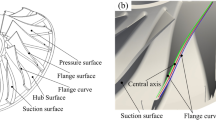Abstract
The automatic cutting of intersecting pipes is a challenging task in manufacturing. For improved automation and accuracy, this paper proposes a model-driven path planning approach for the robotic plasma cutting of a branch pipe with a single Y-groove. Firstly, it summarizes the intersection forms and introduces a dual-pipe intersection model. Based on this model, the moving three-plane structure (a description unit of the geometric characteristics of the intersecting curve) is constructed, and a geometric model of the branch pipe with a single Y-groove is defined. Secondly, a novel mathematical model for plasma radius and taper compensation is established. Then, the compensation model and groove model are integrated by establishing movable frames. Thirdly, to prevent collisions between the plasma torch and workpiece, the torch height is planned and a branch pipe-rotating scheme is proposed. Through the established models and moving frames, the planned path description of cutting robot is provided in this novel scheme. The accuracy of the proposed method is verified by simulations and robotic cutting experiments.














Similar content being viewed by others
References
Gu F, Chen X (2013) Design of a automatic cutting device for intersecting curve of steel pipes. Adv Mater Res 647:901–904
Maity KP, Bagal DK (2015) Effect of process parameters on cut quality of stainless steel of plasma arc cutting using hybrid approach. Int J Adv Manuf Technol 78(1/4):161–175
Liu X, Qiu C, Zeng Q et al (2020) Time-energy optimal trajectory planning for collaborative welding robot with multiple manipulators. Proc Manuf 43:527–534
Lauer S, Wiese P, Dryba S et al (2020) Data-driven approach for robot-assisted multi-pass-welding thick sheet metal connections. Proc Manuf 52:95–100
Kucuk S (2017) Optimal trajectory generation algorithm for serial and parallel manipulators. Robot Comput-Integr Manuf 48:219–232
Shi Q, Zhao J, Kamel AE et al (2021) MPC based vehicular trajectory planning in structured environment. IEEE Access 9:21998–22013
Zhu H, Fu J, Kang J (2011) A CAD/CAM system for 5-axis CNC cutting of multi-pipe intersecting curves with grooves. Adv Sci Lett 4:2670–2674
Shi L, Tian X (2014) Automation of main pipe-rotating welding scheme for intersecting pipes. Int J Adv Manuf Technol 77(5/8):955–964
Shi L, Tian X (2017) Plasma beam radius compensation-integrated torch path planning for CNC pipe hole cutting with welding groove. Int J Adv Manuf Technol 88:1971–1981
Ghariblu H, Shahabi M (2019) Path planning of complex pipe joints welding with redundant robotic systems. Robotica 37(6):1020–1032
Liu J, Hu S, Shen J et al (2017) Intersection seam of sphere and tube welding robot trajectory optimization based on spatial offset curve. Trans China Weld Inst 38(11):47–50
Zhao J, Hu S, Ding W (2011) Mathematical modelling of the intersection seam of sphere and tube based on Matlab. Trans China Weld Inst 32(8):89–92
Chen C, Hu S, He D et al (2013) An approach to the path planning of tube-sphere intersection welds with the robot dedicated to J-groove joints. Robot Comput-Integr Manuf 29(4):41–48
Mitsi S, Bouzakis K, Mansour G et al (2005) Off-line programming of an industrial robot for manufacturing. Int J Adv Manuf Technol 26(3):262–267
Pan Z, Polden J, Larkin N et al (2012) Recent progress on programming methods for industrial robots. Robot Comput-Integr Manuf 28(2):87–94
Liu Y, Tang Q, Tian X (2019) A discrete method of sphere-pipe intersecting curve for robot welding by offline programming. Robot Comput-Integr Manuf 57:404–411
Zhang Y, Lv X, Xu L (2019) A segmentation planning method based on the change rate of cross-sectional area of single V-groove for robotic multi-pass welding in intersecting pipe-to-pipe joint. Int J Adv Manuf Technol 101(1/4):23–38
Craig JJ (2003) Introduction to robotics: mechanics and control, 3rd edn. Prentice Hall, London
Xu F (2014) Concise manual for welding process, 2nd edn. Shanghai Science and Technology Press, Shanghai
Sharma V, Shahi AS (2014) Effect of groove design on mechanical and metallurgical properties of quenched and tempered low alloy abrasion resistant steel welded joints. Mater Des 53:727–736
Chen Y, Wang T (2013) Three-dimensional tool radius compensation for multi-axis peripheral milling. Chin J Mech Eng 26(3):547–554
Moreton DN, Durnford R (1999) Three-dimensional tool compensation for a three-axis turning centre. Int J Adv Manuf Technol 15(9):649–654
Setsuhara Y, Uchida G, Kawabata K et al (2015) Analysis of dynamic discharge characteristics of plasma jet based on voltage and current measurements using a metal plate. IEEE Trans Plasma Sci 43(11):3821–3826
Thanua N, Kumbhar GB (2023) Plasma dynamics-based modeling and analysis of partial discharge in voids inside insulation of power transformer. IEEE Trans Plasma Sci 51(1):284–294
Gonzalez JH, Brollo FR, Clausse A (2009) Modeling of the dynamic plasma pinch in plasma focus discharges based in von Karman approximations. IEEE Trans Plasma Sci 37(11):2178–2185
HyperthermInc (2015) Powermax65 & powermax85 service manual. http://www.hypertherm.com/en/Service/Manuals/
Acknowledgments
The authors thank the National Natural Science Foundation of China (Grant No. 62103234), and the Shandong Provincial Natural Science Foundation (Grant Nos. ZR2021QF027, ZR2022QF031).
Author information
Authors and Affiliations
Corresponding author
Rights and permissions
Springer Nature or its licensor (e.g. a society or other partner) holds exclusive rights to this article under a publishing agreement with the author(s) or other rightsholder(s); author self-archiving of the accepted manuscript version of this article is solely governed by the terms of such publishing agreement and applicable law.
About this article
Cite this article
Liu, Y., Tang, Q. & Tian, XC. Model-driven path planning for robotic plasma cutting of branch pipe with single Y-groove based on pipe-rotating scheme. Adv. Manuf. 12, 94–107 (2024). https://doi.org/10.1007/s40436-023-00453-1
Received:
Revised:
Accepted:
Published:
Issue Date:
DOI: https://doi.org/10.1007/s40436-023-00453-1



